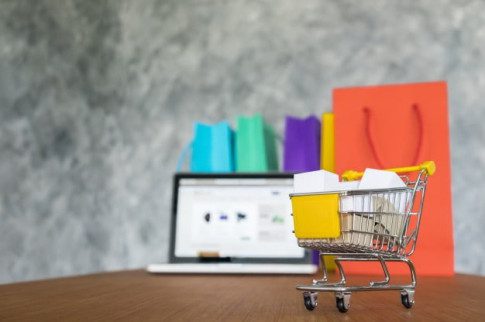The Role Of Screenshots In Your Time Tracker

Table Of Contents
The business world is experiencing an immense shift in work dynamics. In the midst of it all lies the increasing popularity and demand for time-tracking solutions. These solutions promise to boost productivity, streamline project management, and improve accountability.
Time tracking with screenshots helps your business monitor employees’ performance, especially in remote settings. You need not be present in the location to monitor your remote working employees; instead, gauge their productivity based on time tracking with screenshots.
However, using screenshots attributes of these tools is a topic of debate. Are they essential for efficiency, or do they invade privacy? Let’s dive into both sides of the argument to understand the impact of time tracking with screenshots at the workplace.
Advocating for Time Trackers with Screenshots

There are several benefits of using time tracking with screenshots to monitor your employee’s work. Here are some benefits that advocate time tracking with screenshots at the workplace.
Increased Transparency
A high number of users of time trackers with screenshots emphasize the benefits of increased transparency and performance monitoring.
As an employer, you can see what your employees are working on, no matter where they are. This helps everyone stay accountable for their work without neglecting their work.
Time tracking with screenshots is especially beneficial for remote work situations where it’s challenging to supervise everyone in person.
Enables Critical Insights in Workflow Issues
A time tracker with screenshots provides insights into workflow issues and technical problems. How? These screenshots enable employers to determine where things can be improved and offer specific help and training.
Makes Employees Accountable for their Work
The screenshots also prove the work completed, which makes clients happy and helps everyone stay accountable. Clients can see the progress visually, feeling assured that their needs are being met, leading to stronger professional relationships and repeat business.
Keep Track of Work History
In industries like finance or healthcare with strict rules, time trackers with screenshots can create a documented work history for compliance reasons. This ensures everyone follows the rules and reduces the possibility of audits or legal issues.
Training Employees
Screenshots can also be helpful for training and developing employees. Managers can look at screenshots of work processes to see where extra training or resources might be necessary, which can improve the team’s performance and skills.
Critiquing time trackers with screenshots
It’s essential to consider both the benefits and drawbacks of screenshots monitoring employee activity. However, time tracking with screenshots also has drawbacks, which can raise certain concerns for your employees and your organization.
Privacy Breach
You are aware that everybody has a fundamental right to privacy, which is breached when using time-tracking tools for work monitoring. While screenshots can help you take a glimpse at employees’ work, at the same time, they breach a fundamental privacy law.
Autonomy Breach
Along with privacy, autonomy is also breached as an employee has the right to perform his own duties based on his decision. More often than not, employers use time tracking with screenshots to manipulate the actions of their employees.
This can impact the work of employees along with their mental health. Being constantly watched as you work can lower morale and productivity. In addition, capturing sensitive information in screenshots can have ethical and legal implications.
Not Right Solution to Measure Productivity
Another major drawback of time tracking with screenshots is that it’s not easy to measure productivity through work screenshots. You can take the example of an employee who is focused on work research, which leads to fewer work screenshots.
However, this market research related to work is necessary for that employee to build a strategy that would benefit the business. Any research takes time, which cannot always be provided through screenshots, but that does not mean the employee wasn’t productive that day.
Some work activities cannot be provided with screenshots. In these cases, it’s not helpful to gauge productivity with screenshots. A cluttered screen doesn’t always mean meaningful work is getting done. So don’t overlook these factors when judging the work productivity of an employee. This only leads to misunderstandings and poor management decisions.
Decrease Job Satisfaction and Burnout
While a time tracker with screenshots can show activity, there also lies a possibility of a distorted view of productivity. Your employees might feel pressured to constantly show their activity on screens rather than focusing on meaningful and impactful work. This might result in burnout and decreased job satisfaction among your employees.
In jobs that require research and critical thinking, it’s not possible to track work productivity with screenshots. Again, job roles that require creativity and innovation and constant monitoring through screenshots can hinder inspiration and the generation of new ideas because creativity thrives when individuals can explore and experiment without feeling constantly watched.
Security Breach
Every organization or business has a way of doing things, along with data that is specific to that business. When you are time tracking with screenshots, all employees’ activities are recorded, but with these screenshots, sensitive information is also saved.
This can pose security risks for your businesses as you store and share screenshots of your work. So, you need to employ strong security measures for your organization and employees when they share screenshots.
These security measures will protect your organization against potential breaches or unauthorized access to screenshot data. When tracking time with screenshots, you and your employees must comply with data protection regulations like GDPR or HIPAA.
The Middle Ground
To get the most out of time trackers with screenshots, it’s important to gauge the midpoint for transparency and privacy. Employers can use different strategies to address privacy concerns and create a positive work environment. Here’s a few tips:
- Communication is key: Explain to your team why and how time tracking is being used to address any concerns they may have.
- Focus on results: Instead of monitoring every little thing, focus on the end goals and track progress towards them.
- Trust and respect: Build a work culture where employees feel trusted to manage their time and respected for their efforts.
- Involve your team: To respect employees’ privacy and preferences, let employees have a say in choosing and setting up the time tracking tool.
Tailoring Your Approach to Time Tracking
When deciding whether to use a time tracker with screenshots, be conscious of your organization’s needs and values. While these tools offer transparency and performance monitoring benefits, they also raise privacy and autonomy concerns.
Screenshots can offer valuable insights into productivity for tasks requiring focused attention. However, different performance-tracking methods may be more suitable for creative or knowledge-based work.
By following best practices and promoting trust and transparency, organizations can use time-tracking tools to boost productivity while respecting employee privacy and autonomy. The aim is to create a productive workplace dynamic prioritizing efficiency and employee well-being.
Conclusion
We are not encouraging you to stop using time tracking with screenshots to monitor your employees. Instead, we are encouraging you to be fair in your work. You must ensure lawful procedures and enhanced security measures to monitor your employees’ work using screenshots.
Nonetheless, choose a time-tracking solution that aligns with your organization’s values and goals. By balancing accountability and respect for individual privacy with a proper time-tracking solution, your organization can achieve success. Effective time management isn’t about micromanaging every minute but empowering individuals to thrive.
Additional Reading:

























